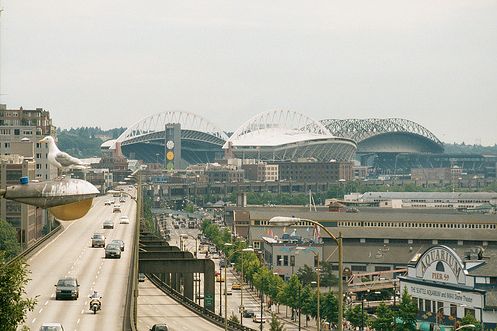As Bradley noted below, the citizens of Seattle face a dilemma. The Alaskan Way Viaduct — an elevated highway that enters Seattle on its west flank, offering stunning views (to drivers) of the city and the waterfront — is falling apart. There’s real danger that an earthquake, or just Father Time, could send it tumbling down, along with lots of cars. Nobody wants that.
That’s where the consensus ends. The question is: what should we do about it?
In some sense this is a local decision, of course. But in an age of climate change, such decisions are never purely local. Every transportation choice made by a big U.S. city will either lock in or avoid hundreds of thousands of tons of GHG emissions over the coming decades. What governs the choice? Is the goal to accommodate rising numbers of single-occupancy vehicles, or to find ways of reducing those numbers? How much should global environmental considerations affect decisions that involve dozens of local stakeholders with short-term economic interests on the line?
We thought other cities could learn something from Seattle’s difficult decision, so over the coming days we’ll be running some pieces from Seattle locals who have strong feelings about it. Hopefully those from other cities can weigh in with comments, advice, and perspective.
More on the subject under the fold.
As Bradley notes, on Tuesday Seattleites will vote in a rather strange special referendum. They’re being offered two options. One is a new, much sturdier, much larger elevated highway. Another is a surface-tunnel hybrid, whereby the part of the highway closest to the city would be buried underground. (The result of the vote will not be binding, so lots of folks think it’s a waste of money.)
Gov. Christine Gregoire favors the new elevated highway. Mayor Nickels favors the tunnel. Both will cost in the billions.
And third option has recently gone from the fringe to major consideration: the surface street option. This would tear down the highway and replace it with … no highway. Instead, a six-lane surface street would run along the waterfront. This option would be accompanied by a number of measures to rationalize traffic flow elsewhere in the city and boost public transportation. It’s favored by most enviros and an increasing number of local pols, since it would revitalize the waterfront and reconnect it to the city.
Stay tuned.


